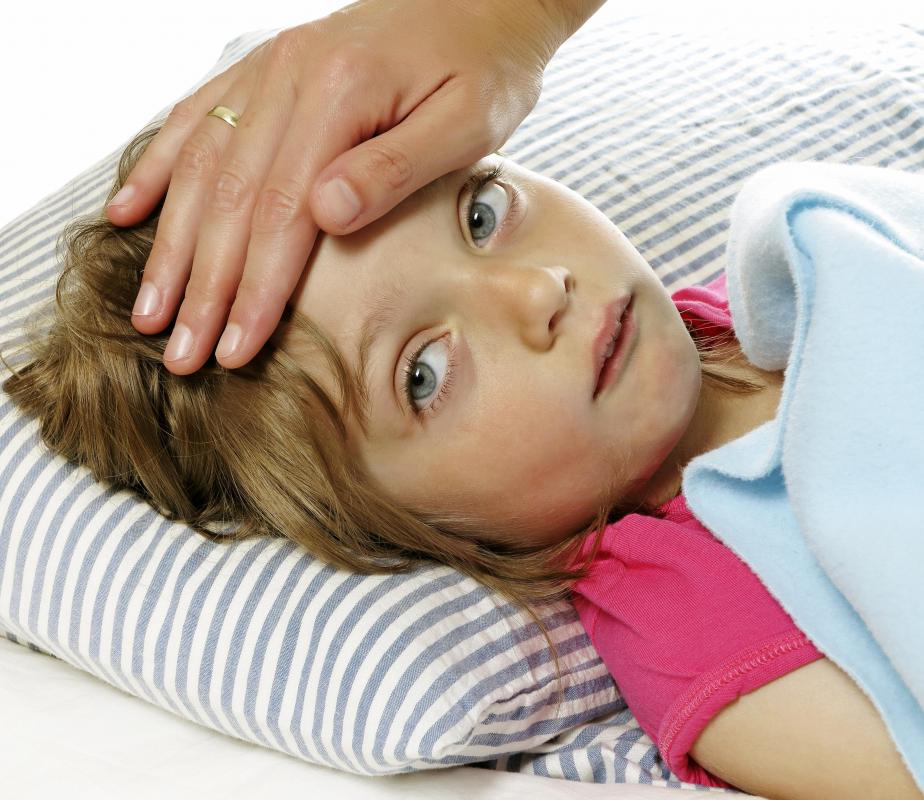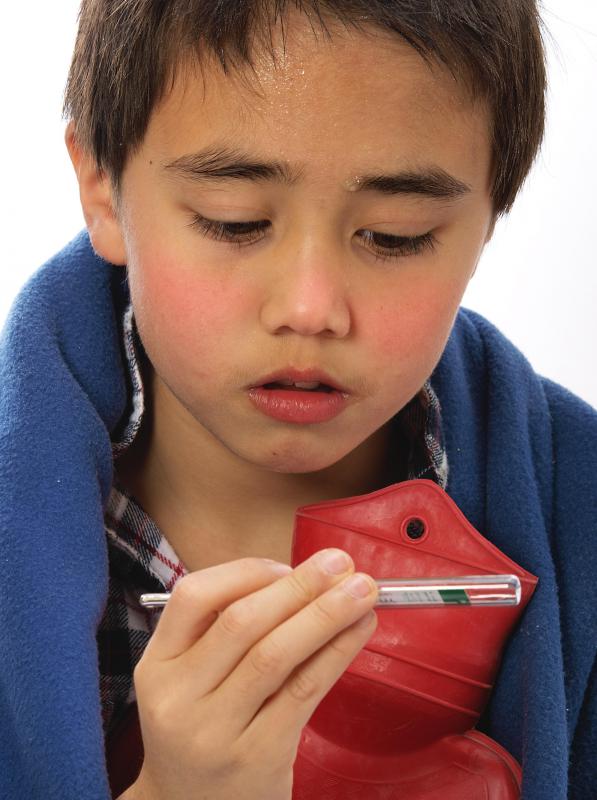At WiseGEEK, we're committed to delivering accurate, trustworthy information. Our expert-authored content is rigorously fact-checked and sourced from credible authorities. Discover how we uphold the highest standards in providing you with reliable knowledge.
How Common Is Mononucleosis in Children?
Mononucleosis in children is fairly uncommon. Although the Epstein-Barr virus — the most common cause of the disease — is detected in roughly 50 percent of children aged 5 and below, about 90 percent of these infections do not result in any noticeable symptoms. Infectious mononucleosis, often abbreviated as "mono," is detected in roughly 50 percent of adolescents and young adults, with the prevalence swelling to about 90 to 95 percent of adults; recent studies estimate that 95 percent of the world's population is infected by the Epstein-Barr virus. The infection is spread through bodily fluids, primarily saliva, and is commonly transmitted through kissing.
Individuals can also develop mononucleosis through exposure to cytomegalovirus, which accounts for roughly 15 percent of all cases. Infectious mononucleosis from a cytomegalovirus infection occurs most commonly in adolescents and young adults. Cytomegalovirus mononucleosis in children is much rarer than the strain derived from the Epstein-Barr virus, and only 20 percent of infected adults develop the disease.

The majority of mononucleosis cases are the result of infection by the Epstein-Barr virus, which can be transmitted through several bodily fluids, including saliva, mucus, and tears. Individuals can get exposed to the virus through direct and indirect contact with these fluids. A large number of cases report the transmission occurring from mouth-to-mouth contact, giving infectious mononucleosis its nickname, the "kissing disease." Younger people are less likely to engage in activities that risk fluid exchange, making mononucleosis in children rare.

In third-world and developing countries, the odds of a child contracting the Epstein-Barr virus are notably higher than in developed countries. Since the infection occurs earlier, these individuals have more time to develop antibodies against the virus, resulting in lower incidences of mononucleosis in adults. Simultaneous infections with other viruses and bacteria, however, can complicate matters and lead to more serious conditions, such as Burkitt's lymphoma.

The symptoms of mononucleosis in children, if present, include mild fever, lower energy, and diminished appetite. Other symptoms present in older patients, such as rashes and glandular swelling, usually do not manifest in children. As a result, it is difficult to determine the exact prevalence of mononucleosis in children; the infection is often too difficult to detect. In cases where infectious mononucleosis symptoms develop in children, the fever usually lasts about two weeks with proper treatment.
AS FEATURED ON:
AS FEATURED ON:
















Discuss this Article
Post your comments